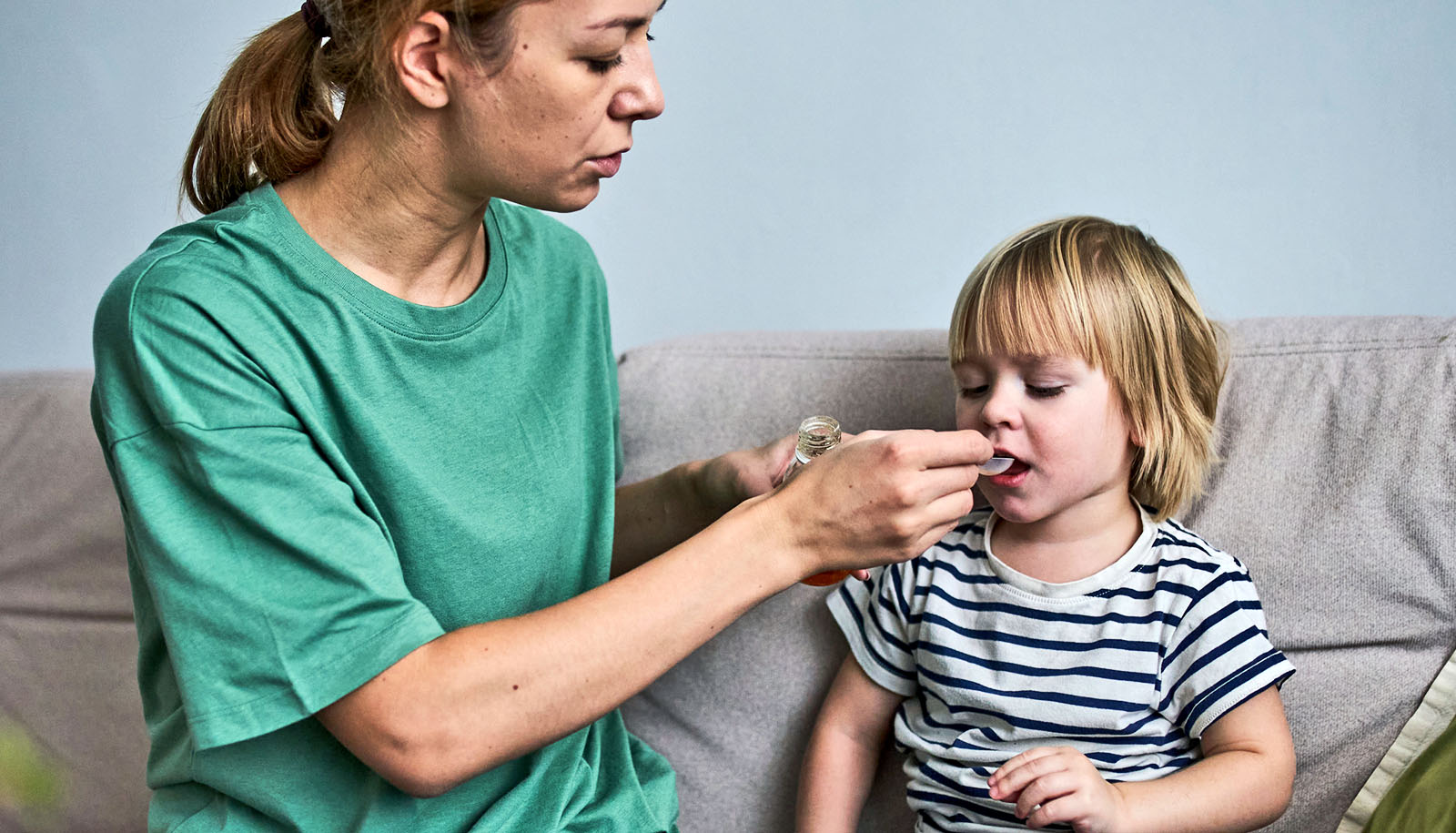Share this
Article
You are free to share this article under the Attribution 4.0 International license.
While most parents recognize that a low-grade fever helps a child’s body fight off infection, one in three would give fever-reducing medication for spiked temperatures below 100.4, a poll finds.
However, medicating low-grade fevers isn’t recommended.
Half of parents would also use medicine if the fever was between 100.4 and 101.9 degrees, and a quarter of parents would likely give another dose to prevent the fever from returning.
“Often parents worry about their child having a fever and want to do all they can to reduce their temperature. However, they may not be aware that in general the main reason to treat a fever is just to keep their child comfortable,” says pediatrician Susan Woolford, co-director of the C.S. Mott Children’s Hospital National Poll on Children’s Health at University of Michigan Health.
“Some parents may immediately rush to give their kids medicine but it’s often better to let the fever runs its course. Lowering a child’s temperature doesn’t typically help cure their illness any faster. In fact, a low-grade fever helps fight off the infection. There’s also the risk of giving too much medication when it’s not needed, which can have side effects.”
The report is based on 1,376 responses from parents of children ages 12 and under polled between August and September 2022.
For infants and newborns three months and younger, any sign of a fever should prompt a call to the provider.
Two in three parents polled say they’re very confident they know whether their child needs medication to reduce a fever. But just over half are sure they understand how temperature readings can change according to the method used.
The method used to take a child’s temperature matters and can affect the accuracy of the measurement, Woolford notes. Parents polled most commonly take their child’s temperature by forehead scan or mouth while less than a sixth use ear, underarm, or rectal methods.
Remote thermometers at the forehead or inside the ear canal can be accurate if used correctly. But forehead readings may be inaccurate, Woolford says, if the scanner is held too far away or if the child’s forehead is sweaty. With ear thermometers, which aren’t recommended for newborns, earwax can also interfere with the reading.
For infants and young children, rectal temperatures are most accurate. Once children are able to hold a thermometer in their closed mouth, oral temperatures also are accurate while armpit temperatures are the least accurate method.
“Contact thermometers use electronic heat sensors to record body temperature but temperatures may fluctuate depending on how it’s measured,” Woolford says.
“Regardless of the device used, it’s important that parents review the directions to ensure the method is appropriate for the child’s age and that the device is placed correctly when measuring temperature.”
Three in four parents say they take their child’s temperature as soon as they notice a possible problem, while a little less than a fourth wait to see if the problem continues or worsens before taking the temperature.
Two-thirds of parents also prefer to try methods like a cool washcloth before using fever-reducing medication. Most parents also say they always or usually record the time of each dose and re-take their child’s temperature before giving another dose.
“A quarter of parents would give their child more medicine to prevent a fever from returning even though it doesn’t help them get better,” Woolford says. “If a child is otherwise doing well, parents may consider monitoring them and using alternative interventions to help keep them comfortable.”
However, if a newborn or infant less than three months old has a fever, they should immediately see a health professional, Woolford adds.
She shares more tips on how to handle fevers in kids:
Let the fever do its job
A fever can be beneficial, and there are several reasons to let a low-grade fever run its course in older children—mainly because it’s working as a weapon to kill the virus or bacteria causing sickness, Woolford says.
Evidence shows that fevers are part of the immune response to prevent viruses and bacteria from replicating and also produce more white blood cells and antibodies.
Fever-reducing medications also mask symptoms.
“Medications used to lower temperatures also treat pain, but pain is often a sign that helps to locate the source of an infection,” Woolford says. “By masking pain, fever-reducing medication may delay a diagnosis being made and delay receiving treatment if needed.”
She adds that parents may also be tempted to take kids in public when they noticeably seem better after medicine when in fact they’re still highly contagious and may infect others.
Don’t overdo it
When parents choose to give fever-reducing medication, it’s helpful to keep a log of temperature readings and when they gave the child medicine. This will provide an accurate record in the event that the child’s fever continues for an extended period of time.
Parents of young children in particular should also avoid using combination cold medications along with fever-reducing medications due to the risk of over dosage.
“As we know, all medications can have side effects and we really don’t want children to get too much medication when it’s not necessary,” Woolford says.
When communicating with the child’s provider to help determine the best recommendations about treatment, it’s helpful for parents to share the timeline of the child’s fever, doses of fever-reducing medication, other symptoms and how the child is acting compared to their “usual” behavior.
Ease discomfort in other ways
Parents may consider other interventions to relieve discomfort and aid in more restful sleep instead of medicine, Woolford says.
Such approaches could include keeping their room cool and not letting them overexert themselves, as well as ensuring the child is in light clothing and encouraging them to stay well hydrated with fluids or popsicles.
Know when to call the doctor
For infants and newborns three months and younger, any sign of a fever should prompt a call to the provider.
For children 4-12 months old, parents should consult with a doctor if a fever is accompanied by signs such as decreased activity, increased fussiness, or decreased urine output. Parents should also call if their child has signs of pain or if they are not acting themselves even when their temperature comes down.
Fevers that reach 104 degrees or fevers that remain for an extended period (more than 24 hours for children under two, or more than three days for children ages two and older) should prompt contact with the provider.
Source: University of Michigan










